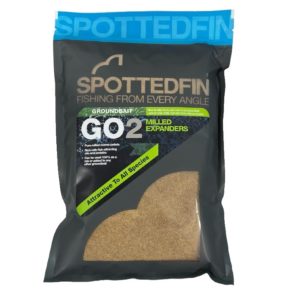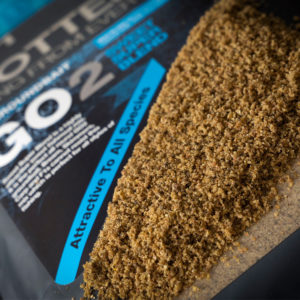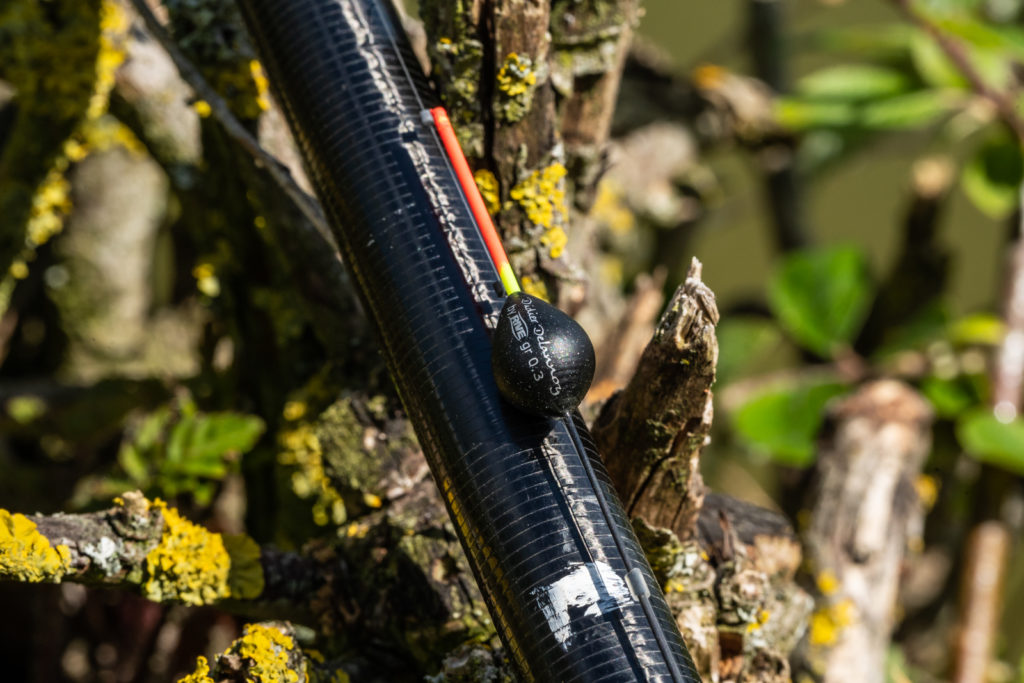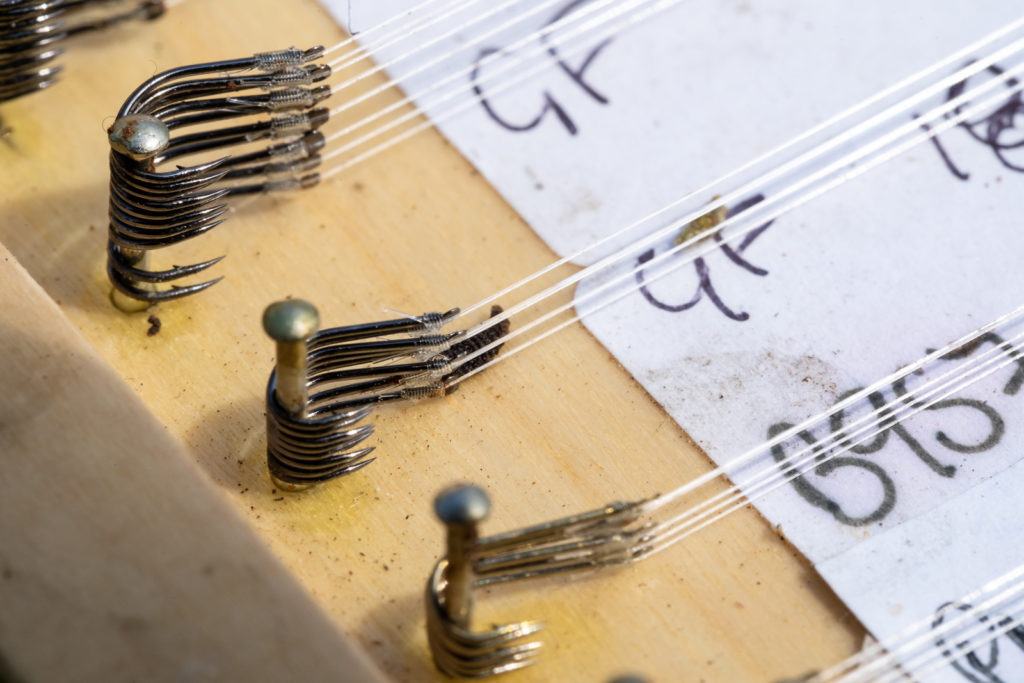“Roach for show, bream for dough,” so the saying goes, and those words certainly ring true on the Grand Union Canal. When you check the match results on most canals across the south of England you cannot fail to notice that the frame places are dominated by bream and skimmer weights; approaches must be focused towards the bronze beauties if you’ve any hope of producing the goods, with roach tactics very much a back-up on those particularly tough days.
I have brought the Spotted Fin cameras to the Ivinghoe length of the Grand Union, not far from Leighton Buzzard, to hopefully put a few fish in front of the camera and demonstrate the tactics needed to compete here. This length is used throughout the year for several leagues and club matches and I rate it as one of the best venues on the cut.

As well as being invited down for the purpose of today’s feature, today’s mid-week session also doubles as a sneaky practice for myself ahead of the weekend’s final round of the Sensas Individual Canal League here, so I am keen to target the bream and skimmers and try out some different ways of feeding to see what’s best. I haven’t caught many for a while on the canal and it will be nice to brush up to see what’s working well and get a feel for the venue – maybe even discover a little edge heading into the weekend’s event.
Avoid The Traffic!
Before going into feeding and tackle, the most important thing to decide is where to fish in the peg for these fish, and when. Due to the heavy boat traffic the skimmers and bream are usually caught on the far bank, sometimes literally touching the overhanging brambles or even the bare bank if it is exposed. Today I have about 17 metres to go at and have decided to fish at 14.5. It’s two and a half feet deep here and quite flat, so looks ideal.

Importantly it is far enough over to keep me away from the main boat channel down the middle of the canal. I can always push over to 16 metres and follow the fish later into the day too, which can work well.
Regarding when to fish for skimmers there is no messing about, or even priming the lines, you need to go straight on them. No wasting time, these fish usually show in the first phase of the match or session and if you haven’t had any in the first hour you could have an uphill struggle to put a good weight together.
Although there are fliers on any length, generally with fish-holding features you have to give yourself a chance wherever you draw and if you are lucky enough to nail a few quick lids you could be well on your way to a brown envelope – where there’s one there are very often many!
Current Trends…
Word has it that fishmeal groundbait has been producing the goods at Ivinghoe, so I am definitely going to feed that on one line; it is important to do some research as it quickly steers you in the right direction. Even if you have your own ideas, those of other anglers can always help to hone your approach.

My chosen mix is Spotted Fin Sweet Superblend and Milled Expanders mixed 50/50, fed in conjunction with dead maggots and pinkies plus some micro pellets. Fish are well used to fishmeal here as both coarse and carp anglers have been using it here in abundance in recent years. This will be fed at 14.5 metres to my right with the natural draw of the canal flowing that way. To my left at the same distance and depth I am going to feed chopped worms and casters with a few dead reds and pinkies mixed in, a bit more of a standard canal bonus-fish approach.
Tackle-wise I have opted to set up a solid No6 elastic through the long No1 section of my Rive R16 match kit, this is set soft but gives me some power in reserve if I need to apply some pressure. A 0.3g Rive float with a hollow tip on 0.14mm main line with a strung-out shotting pattern is combined with a 0.10mm hooklength, which is 20 centimetres long and paired with a wickedly sharp Guru Feeder special hook. I feel this gives me a balanced setup and with no snags around this should deal with the skimmers and bream.
I have also set up a carp rig with a small dibber float on 0.20mm direct to a size 12 Kamasan Animal hook. Heavy elastic completes the setup and to be fair this rig has done me proud over the years as much for bream as carp!
Making Changes
To kick the swim off I am not going to pile bait in, I am looking for a quick response and will be topping my two lines up early in the session. Half a pot of chopped worms, casters and a few maggots and pinkies go in to my left-hand 14.5m line. I don’t mince the worms as there is always some movement on the water and I don’t want the bait to disperse and spread too much.
The right-hand groundbait line gets two balls of overwetted mix but no worms, just the micros and dead maggots and pinkies. I haven’t fed a roach line today and just want to fish for skimmers and learn as much as I can for the weekend’s match.

Baiting up with a dead maggot and pinkie combo I ship out and drop in on my worm line; nothing happens for 10 minutes but then after a quick dink of the bristle I am rewarded with a 3lb bream, a great start! Two more nice skimmers follow suit but then a small perch and gudgeon signal that the better fish have backed off in the shallow water and a top-up is needed.
A third of a pot of the chopped worm mix goes in, a nice positive feed with the coarsely chopped worm sinking straight down. It’s important to avoid feeding this mix when the canal is moving as all of that attraction and scent you have introduced will simply be taken down-tow and as a result take the fish with it!
Moving over to the groundbait line nothing much happens, which surprises me so I top it up but this time introduce some worms to the mix. Back on to the neat worm line a nice run of good skimmers show up but once again they back off and the small fish move in, another top-up is called for.

This time when I switch to my groundbait line there are some fish there; I catch three quick bream off this line along with a couple of skimmers then the by now familiar pattern of small fish appearing means more feed is needed. Interestingly with each top-up of groundbait I manage to catch more fish than I am able to on the neat worm line, with the combination of groundbait and worms seemingly holding the fish a little better than the worms alone. Switching between the two lines has proved important and doing so has ensured I have been able to keep fish coming and is the pattern for the rest of the session.
A lovely four hours later I have caught about 35lb. Introducing worms on the second groundbait line certainly had a positive effect and I have caught on both lines really well. Interestingly it has been almost solely better bream on the neat worm line before fading, whereas the groundbait line would produce some better fish followed by some smaller skimmers.

My setup has worked perfectly, with only one fish coming off. The only slight tinkering I have done is to add two No11 Stotz as back shot above my float – one level with the bristle and one bang next to the eye on the float. This has improved presentation when the wind has got up and put a skim on the surface, allowing me to keep my rig dead still.
Practice Makes Perfect!
All in all it’s been a fantastic day’s fishing in great surroundings and the best day’s skimmer fishing on the canal I have had for a long time. More importantly, I feel I have formulated a good plan for the upcoming weekend, which is where I thought I would conclude the article… although I had caught 35lb and had learnt loads I was under no illusion that the weekend would be that easy – increased angling pressure in the match and more boat traffic would knock back the weights.
I actually drew about 10 yards from where I had fished midweek, which was great and set up in a similar manner to the practice session. The only difference being that I put the worm line further over at 16 metres due to loads of boats coming through before the match started. I also fed a squatt line at 11.5 metres; this was my back-up ‘catch everything’ line, which was not necessary for the feature itself.

I had a great start taking a 2-pounder from the neat worm line before the small fish moved in and I topped it up. Two smaller skimmers from the groundbait line followed; I had again fed with the same mix as in practice but including worms from the start. These fish were a worthwhile addition before I moved back to the worm line.
A foul-hooked fish came off midway back then I nailed a 2lb-plus hybrid, so with close to 6lb in the net after 40 minutes I was certainly sitting pretty, especially as not much had been caught elsewhere. Another half hour fishing for skimmers was fruitless, the golden spell was finished but I felt I had made the most of it, albeit I had lost that foul-hooker.
By switching to my squatt line for the rest of the match I ended up with 15lb 3oz, which was good enough for maximum section points and second overall on the day, the match being won on Peg A1 with 17lb and 12lb was third.
So, lessons learnt in practice proved their worth, the correct setup and feeding plus feeling confident produced a good result and a nice end to the league.

Simon Uses…
-
 GO2 Milled Expander 100%£5.99 – £17.99
GO2 Milled Expander 100%£5.99 – £17.99 -
 GO2 Sweet Super Blend£4.99 – £14.99
GO2 Sweet Super Blend£4.99 – £14.99


